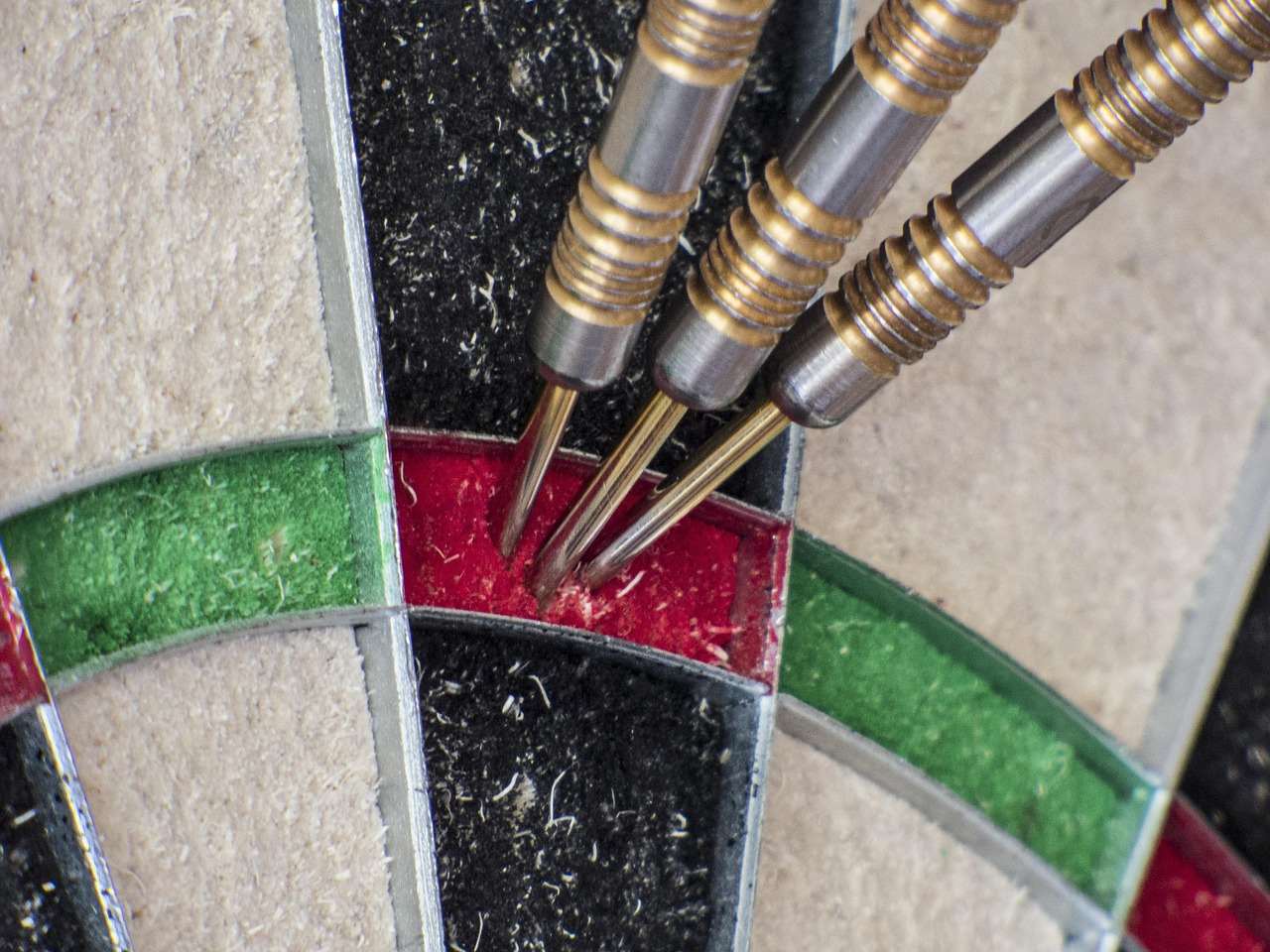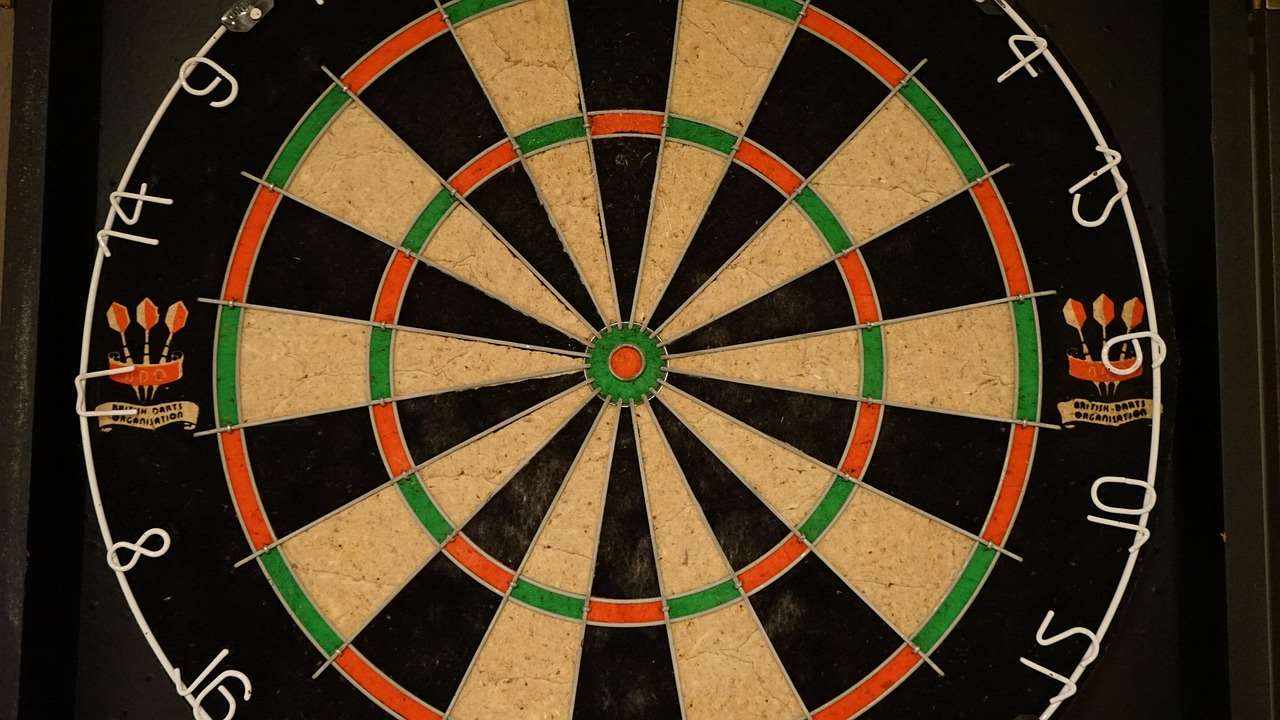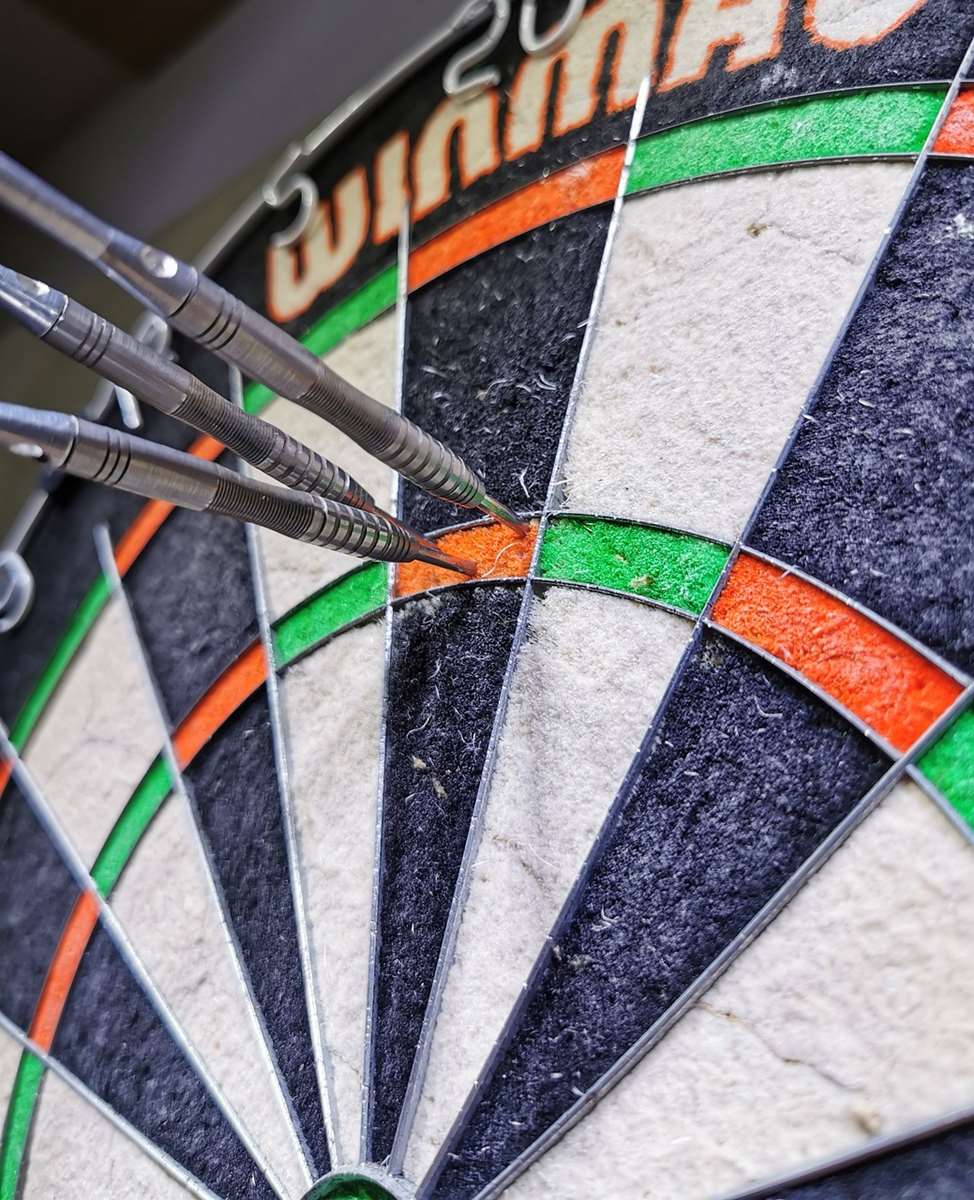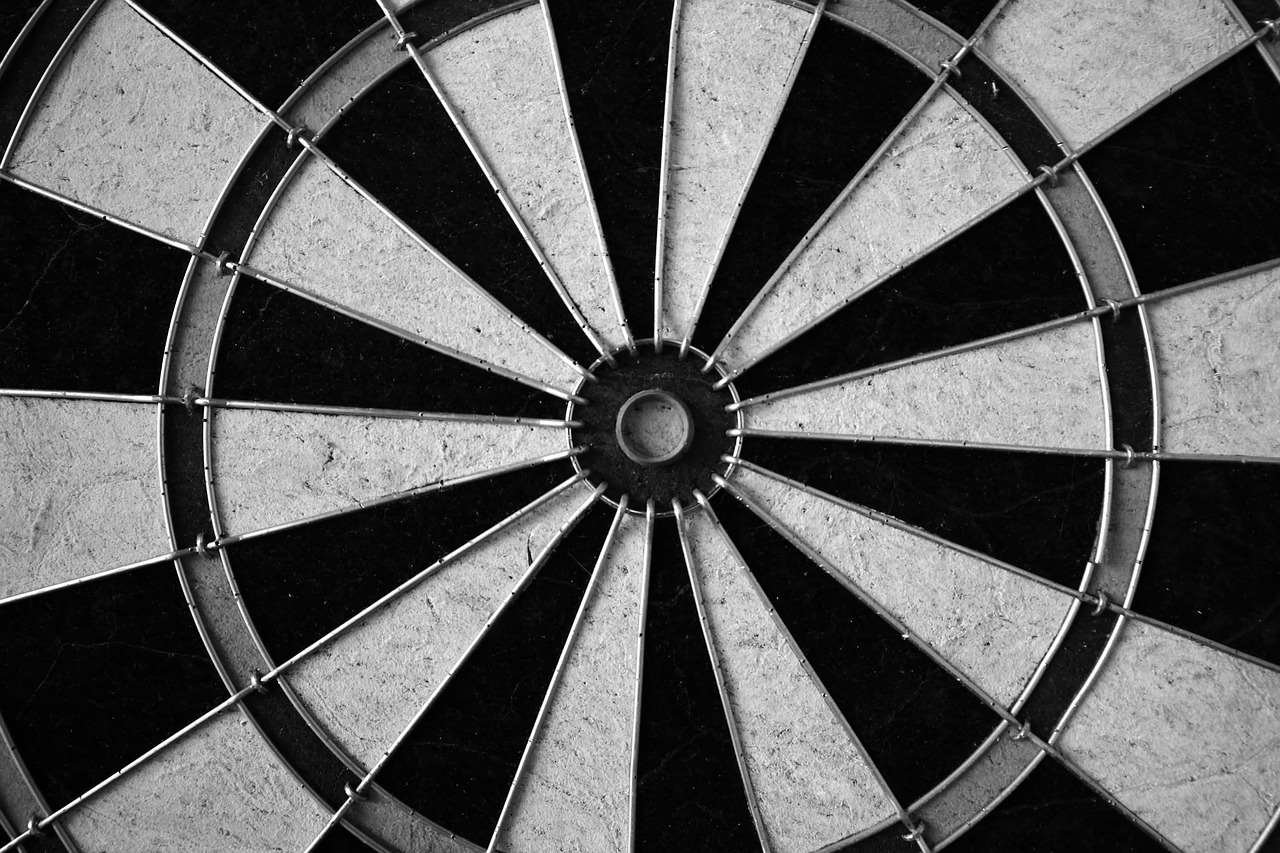Using the Treble 20 effectively in Cricket darts is crucial for quickly closing out numbers and gaining a strategic advantage. Mastering consistent hits on the treble 20 allows you to dictate the pace of the game and pressure your opponent. This article will explore techniques, strategies, and practice methods to significantly improve your treble 20 accuracy in Cricket darts, covering everything from stance and grip to mental preparation and game-day tactics.
⚠️ Still Using Pen & Paper (or a Chalkboard)?! ⚠️
Step into the future! The Dart Counter App handles all the scoring, suggests checkouts, and tracks your stats automatically. It's easier than you think!
Try the Smart Dart Counter App FREE!Ready for an upgrade? Click above!
Why Mastering the Treble 20 is Key in Cricket Darts
In Cricket darts, unlike games like 501, the focus isn’t solely on reducing your score to zero. It’s about closing out specific numbers (20, 19, 18, 17, 16, 15, and the bullseye) three times before your opponent. Therefore, maximizing your scoring potential on the 20 is paramount. Hitting the single 20 is good, but consistently finding the treble 20 (T20) is where the real advantage lies. Think of it as the primary weapon in your Cricket arsenal.
The treble 20 allows you to:
- Close numbers faster: Three darts in the T20 close out the 20 in a single turn.
- Build a lead: If your opponent hasn’t closed a number and you have, every point scored on that number adds to your point total.
- Apply pressure: Consistent T20 hits can mentally rattle your opponent, forcing them into mistakes.
- Control the board: By strategically closing numbers and building a lead, you dictate the flow of the game.
Ignoring the importance of treble 20 accuracy is a significant handicap in Cricket darts. Players who focus on spreading their darts around the board without a clear target will struggle to keep up with those who have mastered this crucial segment.

Techniques for Improving Treble 20 Accuracy
Improving your treble 20 hitting percentage requires a combination of technical adjustments, focused practice, and mental fortitude. Let’s break down the key elements:
Stance and Posture
A stable and consistent stance is the foundation of any good dart throw. Experiment to find what works best for you, but generally, consider these points:
- Foot Placement: Most players adopt a stance where their dominant foot is slightly ahead, pointing towards the board. The rear foot provides balance.
- Weight Distribution: Aim for a balanced weight distribution between both feet. Avoid leaning too far forward or backward.
- Body Alignment: Your throwing arm, shoulder, and eye should be aligned with the target (the T20).
- Consistency: Once you find a comfortable and balanced stance, stick with it. Minor adjustments are okay, but avoid major overhauls. You can get back to basics by reading Basic Darts Fundamentals for Beginners.
Grip and Release
The way you hold and release the dart significantly impacts its trajectory. Finding the right grip is a personal preference, but here are some common techniques:
- Grip Pressure: Avoid gripping the dart too tightly. A relaxed grip allows for a smoother release. Experiment with different levels of pressure to find what feels most natural.
- Finger Placement: Many players use a three- or four-finger grip, with the thumb providing stability and the index finger guiding the dart.
- Release Point: Focus on a smooth and consistent release point. Visualize the dart leaving your fingertips and traveling directly towards the T20.
- Follow Through: A proper follow-through is essential for accuracy. Extend your arm fully towards the target after releasing the dart.
Throwing Motion
A fluid and repeatable throwing motion is crucial for consistency. Here’s a breakdown of the key phases:
- Backswing: Draw the dart back smoothly and consistently. Avoid jerking motions.
- Forward Swing: Accelerate the dart towards the target in a straight line.
- Release: Release the dart at the precise moment when your arm is fully extended.
- Follow Through: Maintain your follow-through after releasing the dart.
Regular practice and video analysis can help you identify and correct flaws in your throwing motion. Pay attention to your arm angle, release point, and follow-through.

Strategic Thinking: When to Aim for the Treble 20
While the treble 20 is often the primary target in Cricket darts, there are strategic considerations to keep in mind. Knowing when to aim for the T20 and when to adjust your strategy can significantly improve your chances of winning.
Assessing the Board State
Before each throw, take a moment to assess the current state of the board. Consider these factors:
- Numbers Closed: Which numbers have you and your opponent closed?
- Point Lead: Do you have a point lead? If so, how big is it?
- Opponent’s Position: What numbers does your opponent need to close? Are they close to closing any numbers?
Adjusting Your Strategy Based on the Board
Based on your assessment of the board, you may need to adjust your strategy. Here are some scenarios:
- Early Game: In the early stages of the game, focus on closing numbers as quickly as possible. The T20 is your primary target.
- Building a Lead: If you’ve closed the 20 and your opponent hasn’t, continue to target the T20 to build a point lead.
- Defensive Play: If your opponent is close to closing a number, you may need to switch to that number to prevent them from scoring.
- Closing Out the Game: If you have a significant point lead and are close to closing all the necessary numbers, prioritize closing those numbers over scoring points.
Sometimes, aiming for the single 20, or even the 1 or 5 next to it, can be a strategic move. For example, if you need one more hit on the 20 to close it, aiming for the single 20 is a safer bet than risking a miss on the treble. Or, consider if your opponent is setting up for a big score by hitting the triple 19; a single 20 might be the wiser defensive choice.

Practice Drills to Sharpen Your Treble 20 Skills
Consistent practice is essential for improving your treble 20 accuracy. Here are some drills you can incorporate into your practice routine:
The “Round the Clock” Drill
Start by aiming for the 1 segment. Once you hit it, move to the 2, then the 3, and so on, all the way around the board. This drill helps you develop accuracy and consistency on all parts of the board, including the 20. It also improves your overall darting ability, making you a more well-rounded player, and fun dart game variations with modified rules may offer some different practice ideas.
The “Treble 20 Only” Drill
This drill focuses specifically on the treble 20. Throw a set number of darts (e.g., 9 darts) and count how many you hit in the T20. Track your progress over time to monitor your improvement.
The “Cricket Number Focus” Drill
This drill simulates a game of Cricket. Choose a specific number (e.g., 20) and try to close it out as quickly as possible. Repeat this drill with all the Cricket numbers (20, 19, 18, 17, 16, 15) and the bullseye. This will help you improve your accuracy on all the key numbers in Cricket darts.
The “Pressure Practice” Drill
Simulate game-like pressure by setting goals or challenges for yourself. For example, tell yourself you need to hit three treble 20s in a row, or you have to close out the 20 within a certain number of throws. Add small penalties for missing to increase the pressure. This helps you develop mental toughness and perform under pressure.
Remember to vary your practice drills and keep them challenging to stay motivated and continue improving. Focus on quality over quantity – a few focused throws are more beneficial than many unfocused ones.

Mental Game and Mindset for Treble 20 Success
While technical skill is essential, the mental game plays a significant role in treble 20 accuracy. Developing a strong mindset can help you perform consistently under pressure.
Visualization
Before each throw, take a moment to visualize the dart hitting the treble 20. See the dart flying through the air and landing exactly where you want it to go. This mental rehearsal can boost your confidence and improve your focus.
Positive Self-Talk
Replace negative thoughts with positive affirmations. Instead of thinking, “I’m going to miss,” tell yourself, “I’m going to hit the T20.” Positive self-talk can help you stay confident and focused, and adapting dart game rules for children may help younger players build more confidence, too.
Concentration and Focus
Minimize distractions and focus your attention solely on the target. Block out any external noise or internal thoughts that could interfere with your concentration. Deep breathing exercises can help calm your nerves and improve your focus.
Dealing with Pressure
Learn to manage pressure effectively. Recognize that nerves are normal, and use them to your advantage. Focus on the process of throwing the dart, rather than the outcome. If you miss, don’t dwell on it. Acknowledge the miss, learn from it, and move on to the next throw.
Building Confidence
Confidence is crucial for success in darts. Build your confidence through consistent practice and positive self-talk. Celebrate your successes, no matter how small. Remember that every dart you throw is an opportunity to learn and improve.
Equipment Choices for Optimizing Treble 20 Hitting
While skill and technique are paramount, the right equipment can contribute to Using the Treble 20 effectively in Cricket darts. Consider these factors when selecting your darts:
Dart Weight and Material
Dart weight is a personal preference. Most players use darts between 22 and 26 grams. Experiment with different weights to find what feels most comfortable and controllable. Dart barrels are typically made of brass, nickel-silver, or tungsten. Tungsten darts are denser and allow for a slimmer profile, which can be advantageous for grouping darts closer together.
Shaft and Flight Selection
Shaft length and flight shape affect the dart’s trajectory. Shorter shafts tend to create a flatter trajectory, while longer shafts produce a more arcing trajectory. Different flight shapes (standard, kite, slim, etc.) affect the dart’s stability and drag. Experiment with different combinations to find what works best for your throwing style.
Dartboard Quality
A high-quality dartboard is essential for accurate scoring and durability. Look for a sisal fiber dartboard with thin wire dividers. Regularly rotate your dartboard to prevent wear and tear.
Maintenance
Keep your darts clean and in good condition. Regularly sharpen your dart points and replace damaged shafts and flights. Proper maintenance will ensure consistent performance.

Conclusion: Elevating Your Cricket Darts Game
Using the Treble 20 effectively in Cricket darts is a skill that can be honed through dedication, practice, and strategic thinking. By focusing on your stance, grip, throwing motion, and mental game, you can significantly improve your treble 20 accuracy and gain a competitive edge. Remember to assess the board state, adjust your strategy accordingly, and practice consistently. Embrace the challenges, celebrate your successes, and enjoy the journey of becoming a better darts player.
Now that you have a solid understanding of how to improve your treble 20 accuracy, it’s time to put these techniques into practice. Grab your darts, head to the oche, and start honing your skills. The more you practice, the more confident you’ll become in your ability to hit the T20 consistently. So, get out there and start dominating the Cricket board!
Hi, I’m Dieter, and I created Dartcounter (Dartcounterapp.com). My motivation wasn’t being a darts expert – quite the opposite! When I first started playing, I loved the game but found keeping accurate scores and tracking stats difficult and distracting.
I figured I couldn’t be the only one struggling with this. So, I decided to build a solution: an easy-to-use application that everyone, no matter their experience level, could use to manage scoring effortlessly.
My goal for Dartcounter was simple: let the app handle the numbers – the scoring, the averages, the stats, even checkout suggestions – so players could focus purely on their throw and enjoying the game. It began as a way to solve my own beginner’s problem, and I’m thrilled it has grown into a helpful tool for the wider darts community.